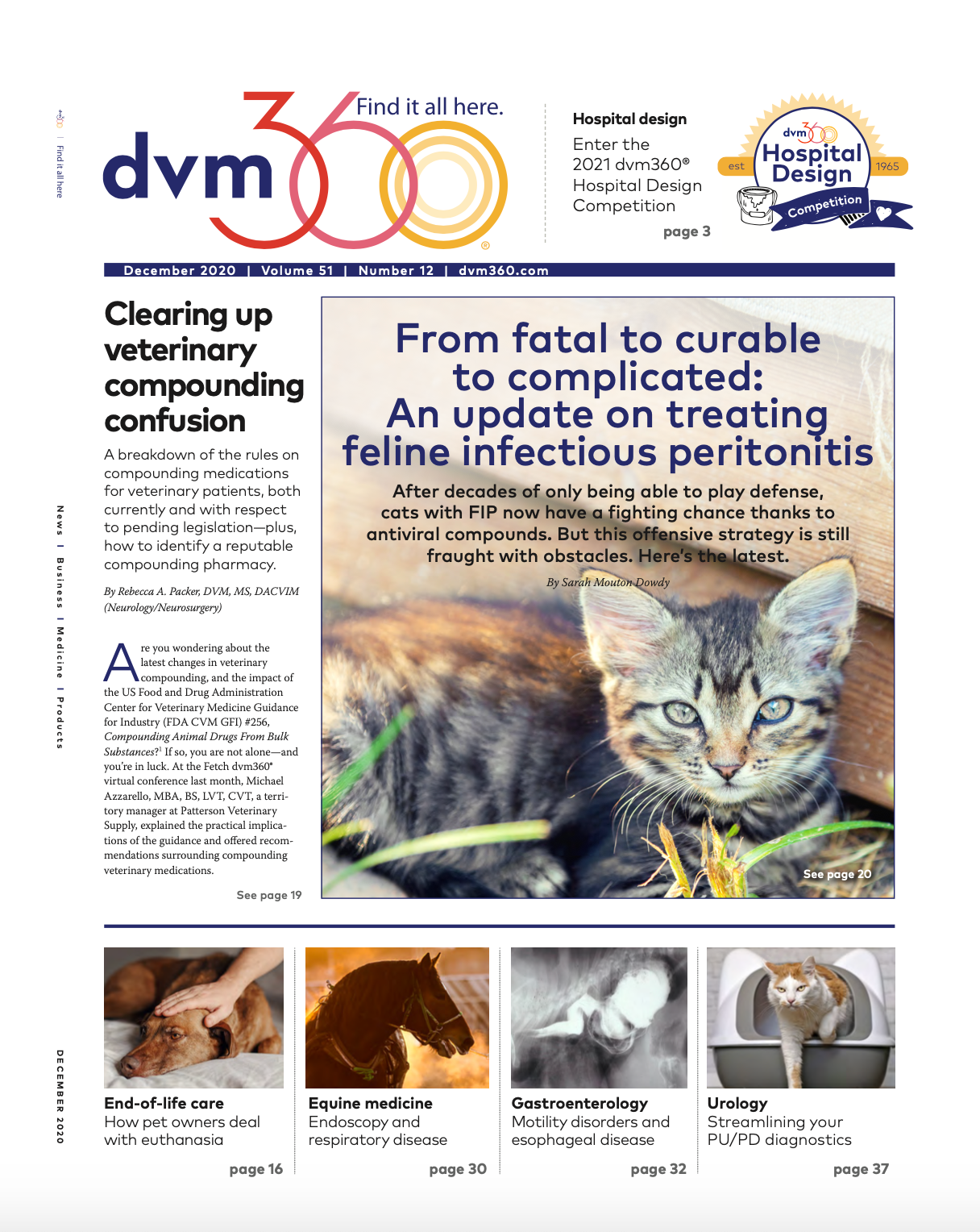Consolidation concerns: What you need to know
Find out how veterinary corporatization has evolved, plus a look at some consolidation strategies.
GoodIdeas / stock.adobe.com

By Christopher Allen, DVM, JD
Veterinary practice consolidators have become increasingly clever. They have grown from a handful of fledgling clinic groups to animal hospital conglomerates. Initially, the overriding objective was to acquire already profitable hospitals and bring them into a collective through which the consolidator could use economies of scale (bulk purchasing power, streamlined multihospital computerization, etc.) to hoist each acquisition to even greater profitability.
However, with the price of hospitals and associates’ salary demands on the rise, consolidators have identified new ways to incentivize performance of the veterinarians from whom they purchase clinics and who stay on as clinicians, as well as the “worker-bee” employee-DVM at the acquired hospital.
Early in the corporatization game, things were simple. A practice seller would be courted, the price was set for the buyout, and the seller/former owner was required to work for a couple of years for a generous salary—a nice and straightforward process.
As time went on, consolidators discovered that once a clinic seller received a big check at closing, enthusiasm for bringing in every last dollar in the exam room began to wane. Suddenly the set salary paid by corporate to the practice seller seemed pretty high as many previous owners decided to shift into a lower gear once the hospital was no longer theirs.
The same started happening with associates who suddenly found themselves working for a big business with owners they didn’t know, after working hard for people they knew personally and trusted. For many, there didn’t seem to be as much reason to put in long hours, love on every client, and collect deposits on those late-night emergencies.
Enter compensation incentivization
It isn’t a mystery why corporate veterinary hospitals have firmly embraced the concept of production/salary compensation formulas. It makes sense because the more an associate or former owner generates in revenue, the more money they take home. ProSal seemed like a panacea to corporate veterinary medicine—and it indeed did the trick—for a while.
Initially, the incentive value of ProSal seemed like a great way to get veterinarians to work at maximum efficiency and speed. But eventually, corporations discovered a glitch—something that might seem intuitive once you think about it a bit. Practice sellers who continue to work at their recently sold hospitals found themselves flush with cash from their recent sale closing. As such, the extra money generated by a ProSal-based paycheck may not be all that incentivizing to a veterinarian who is at retirement age and has just received a very large one-time payout for his business.
From the boardroom: New incentives
Corporate veterinary consolidators today are approaching their incentivization goals in numerous innovative ways. Some are banking on new incentivizing “carrots” and others are experimenting with “sticks.”
For example, a corporation (most consolidators are LLCs so “corporation” is a technical misnomer) may decide to change its compensation arrangement for a practice seller, putting them on a strictly production basis so if they slack off, the only one suffering is them.
There is also a myriad of positive incentives consolidators are using to maximize veterinarians’ productivity, and hence, bottom-line profit. Below are brief outlines of strategies and structures employed by players in the veterinary roll-up business space.
Offer of equity participation in the consolidator itself
This incentive program is more commonly offered to practice owners who are cashing out of their hospitals rather than to associates. The program allows a seller to take a portion of the clinic’s purchase price in the acquiring company’s stock or “membership units” in the case of an LLC. That way, the company hopes that whoever is selling the practice will work hard during the post-sale work commitment to help make the veterinary clinic more profitable. In return, they will increase the value of the equity held by the former clinic owner.
Offer of equity in the clinic being acquired
This incentive scheme may be offered to encourage associates to stay with the acquired hospital after it’s sold. Under this technique, the corporate clinic acquirer may allow an associate, or in some cases the previous owner, to buy shares in the individual veterinary clinic being acquired. The theory here is that the seller or associate will work as hard as possible to maximize profitability in hopes of getting a dividend on the practice equity held.
Offer of preferred stock-style equity in the consolidator
Preferred stock is a type of equity that is a blend of ownership or stock and a bond. Depending on the legal entity organization of an acquiring corporation or LLC, there may be multiple classes of stock or LLC membership units. While some of these equity classes may increase in value and/or pay a dividend, the classes of equity which are designed as a sort of preferred stock, may never increase dramatically in value. They may simply have to pay an established rate of return to the associate or practice seller who holds it.
For example, a consolidator may have Class A units (which have a vote on management decisions) and at same time have Class B and C units, with Class B units paying a 5% interest rate for 10 years and Class C units paying 8.5% for 5 years, after which they must be relinquished to the company or perhaps converted into Class A units.
New complexities as new consolidators enter the market
Not so long ago exiting clinic owners and associates had to make only a few simple decisions when corporate came calling. The seller had to decide on the price and, if it was accepted, collect the sum in cash while the associate simply had to choose to stay or to leave once the hospital was acquired. Associates may or may not have received some type of severance or signing bonus.
Today, there is an ever-expanding menu of financial options offered by practice consolidators. With the increasing number of choices, there is expanding exposure to risk for the doctor who chooses equity participation over cash.
